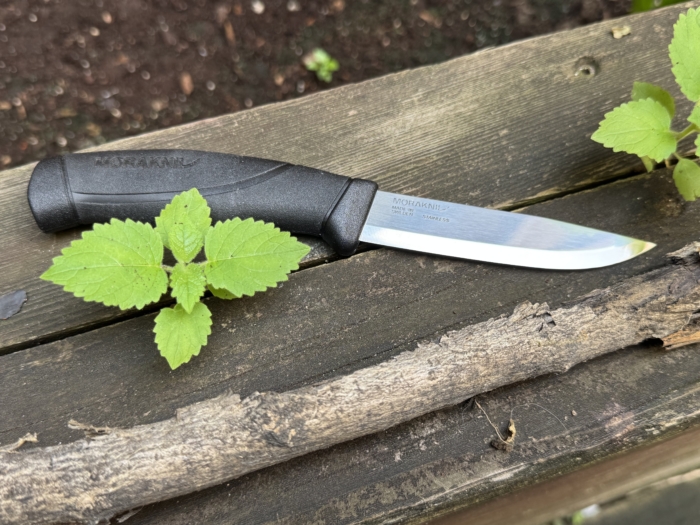Like the Opinel No.08 Inox, the Morakniv Companion’s excellence owes largely to its paltry price. At $16, you could afford it with money from a kid’s paper route. But most importantly, the Morakniv Companion punches way beyond its price tag when it comes to performance and quality.
Realistically, you’d have to pay three times as much to find a knife that could legitimately outperform the Companion. There simply is not a value in knives as good as the Morakniv Companion. I use it so often, I keep it in easy reach in a T-shirt drawer with other frequently used multitools and knives (a standard storage option in a tiny apartment).
In short: For the price of a family dinner at McDonald’s, the Morakniv Companion ($16) serves up a well-finished, Swedish-made knife with a sharp blade straight out of the box. The finishing on the steel, combined with excellent ergonomics, makes it a no-brainer for somebody who wants a reliable blade they don’t have to baby. While it doesn’t have a wood handle, it fits the archetype for an affordable, dependable, fixed-blade knife.
Read the Best Knives for Hiking & Backpacking guide to see how the Morakniv Companion compares.
-
Strong enough for lightweight batoning of thin branches -
Extremely sharp right from the package -
Ultra-grippy rubber make it ultra comfortable and easy to hold onto in all conditions -
Fits securely into the plastic sheath that comes with it
-
Sandvik 12C27 is a fine stainless steel … for the price -
Blade is a bit long for a backpacking knife -
2.5mm-thick blade makes it less nimble
Morakniv Companion Review
Design and Features
Much is made about the fact that the Companion is a partial-tang knife. I think the fixation on full tang knives is overblown for the majority of occasions. Humankind got along fine throughout history — making shelters and fire — with partial-tang knives.
A full tang is useful when you want a bushcraft knife that will see exceptional abuse, such as batoning apart thick branches. In such situations, I prefer a lightweight hatchet or, if car-camping, a two-handed axe, but a full-tang knife also makes sense for such purposes.
Still, I’d be surprised if somebody managed to break a Companion. Despite its price, it’s not a flimsy knife. If somebody came to me with a picture of a broken Companion, I wouldn’t fault the tang.
Shape and Steel
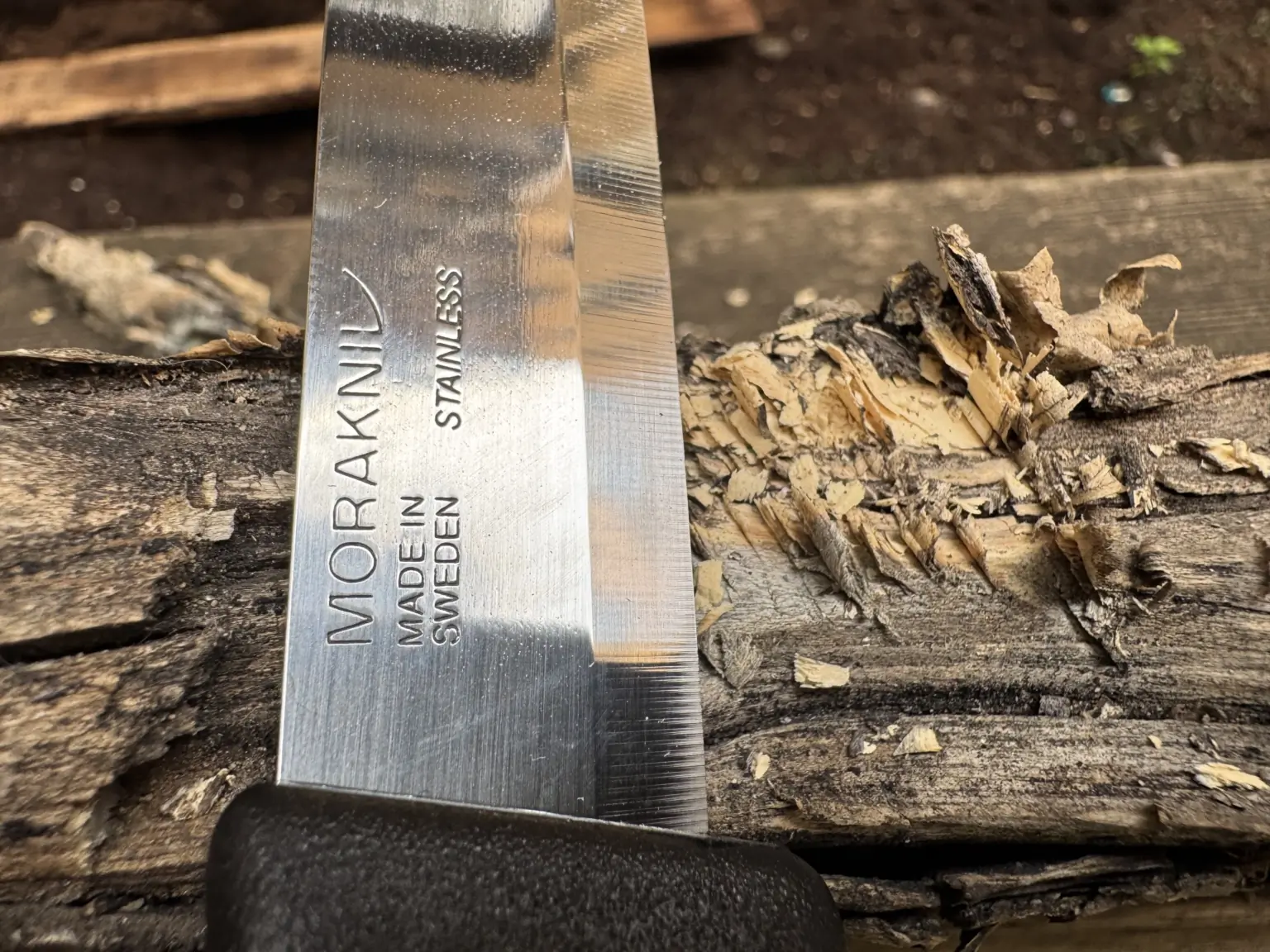



Sandvik 12C27 stainless steel, while a solid performer, isn’t exotic enough to outperform or even match the cutting performance of the industry’s best knives. It’d be a pipe dream to expect an exotic steel at this price, though. For those who turn up their noses at stainless steel, Morakniv offers the Companion with a carbon steel blade, too.
Its 4.1-inch–long drop-point blade is nimble and easy enough to use for tasks that require finesse, such as feathering sticks to create tinder for starting fires. The Companion uses a somewhat unusual grind known as the Scandi grind.
If you were to hold the knife up and look straight toward it, the cutting edge would look like the bottom half of a diamond. Compared to hollow or convex grinds, it’s easier to sharpen because the cutting edge of the blade is made up of flat edges without curves.
Normally, I prefer blades of a 3- to 3.5-inch blade length for a general-purpose knife that isn’t going to be used for bushcraft or dressing game while hunting. That’s the sweet spot for a blade that can handle most tasks (below splitting apart medium-thick branches for shelter), while also not being too much blade for the job.
The Companion’s 4.1-inch–long blade and 2.5mm thickness on the spine put it slightly above my preferred blade length for a hiking knife, but not enough for me to warn people away from using it as their one and only knife.
Easy Handling
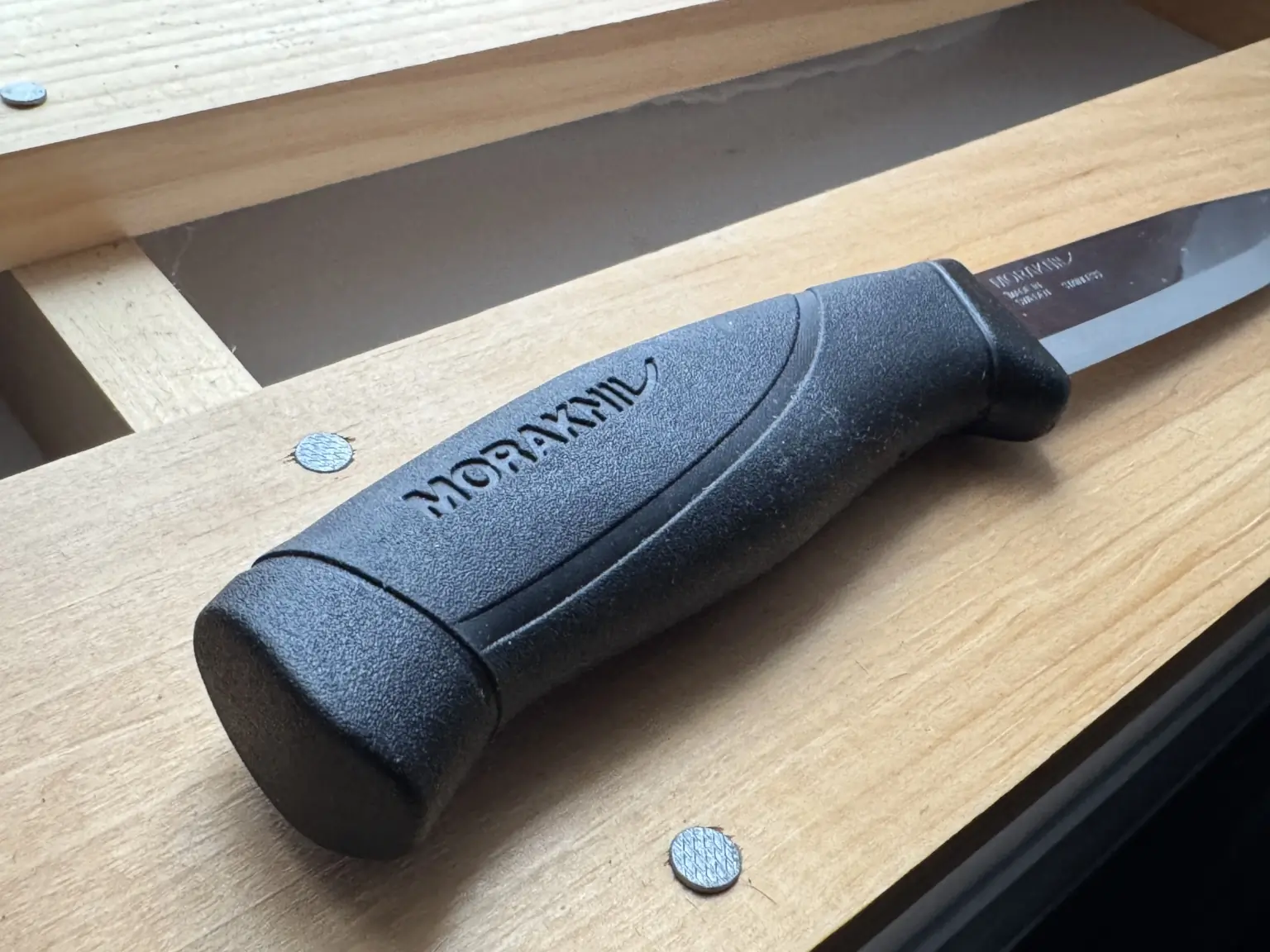



Wood looks good, but rubber comes in first for functionality. I’ve used the Companion in all manner of damp, rainy conditions, from the rainforests of the Pacific Northwest to the regular (but still too-rainy) forests of New England, and never once did I feel like the handle was going to slip out of my hand.
I remember once in Vermont, I’d spent a night in a storm at a campground that even sent the rangers fleeing. When I woke up alone in a deserted park the next morning, the earth underfoot sodden and flooded, I whipped out my Morakniv for a quick modification to a plastic milk jug to create a makeshift water scooper. Even with my hand soaked, the Companion’s rubber handle felt reassuringly secure.
Weight and Durability
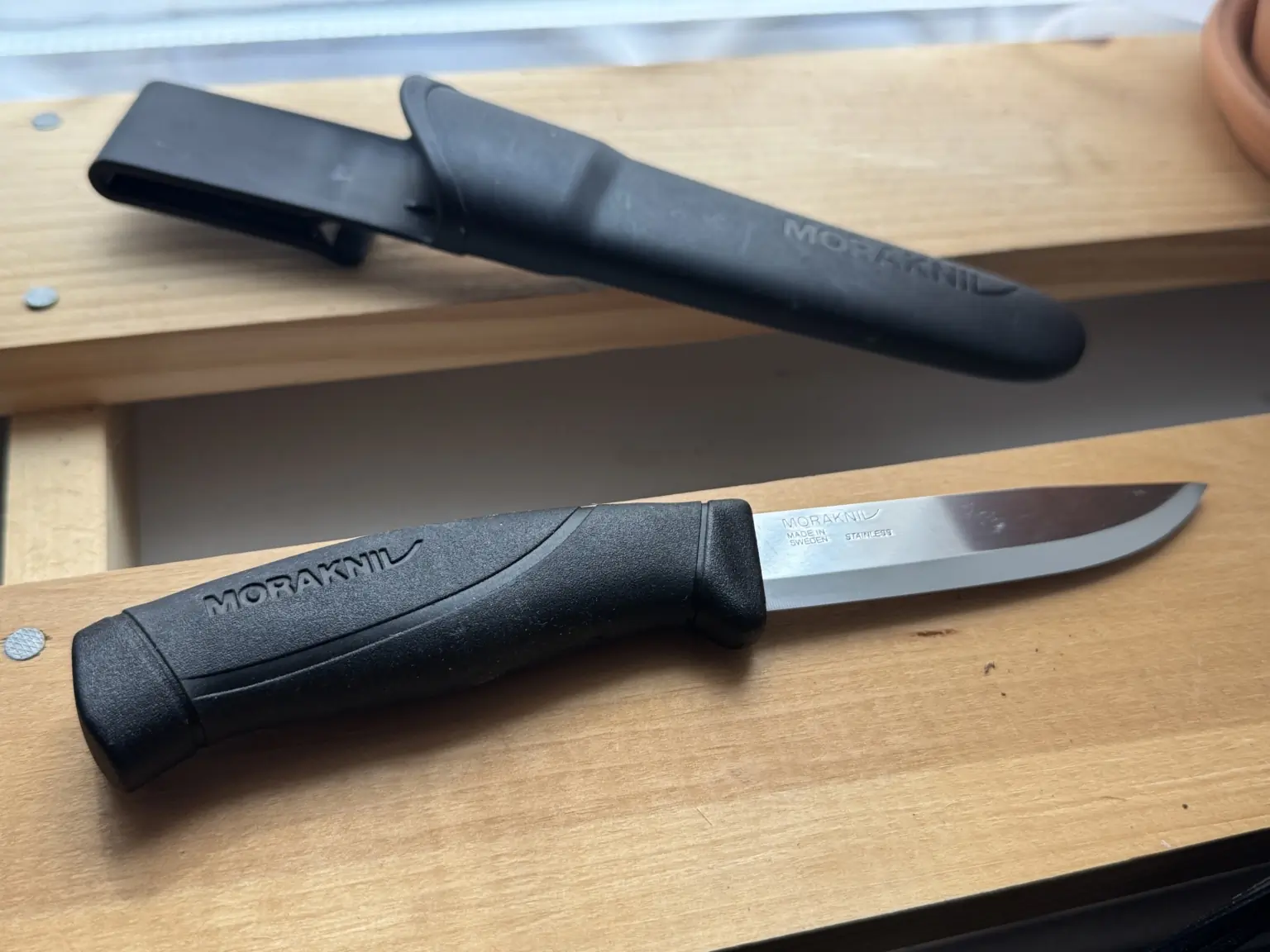



The Morakniv is a bit more blade than a person needs for typical hiking and backpacking trips. When you’re not performing bushcraft, you don’t need a particularly strong knife. It’s not so heavy as to be overkill to bring — like, say, carrying a Bowie knife on your backpacking trip.
You won’t need all of its 4.1 inches of blade length, nor will you require the strength of a fixed blade at all times. But it’s still fairly lightweight and manageable. When I bring my wood stove (Trail Designs Sidewinder Ti-Tri), I take my Companion to break up small branches and baton thicker pieces apart. It’s strong enough for that task because the branches needed for a small, solo stove like the Ti-Tri are rather thin.
Morakniv Companion: Who’s It For?
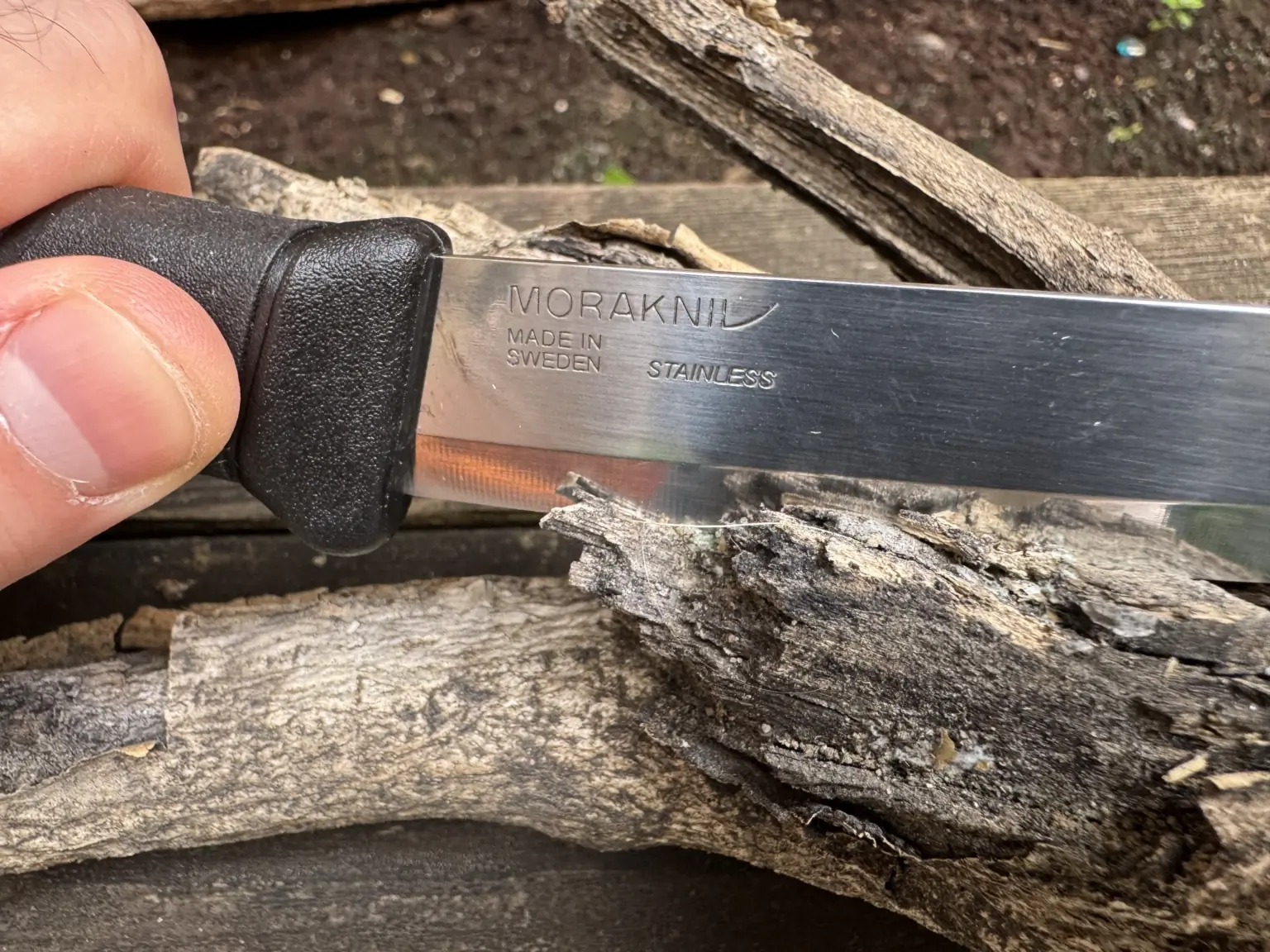



You know the old hiking maxim, “Every ounce counts”? That’s why I tend to recommend smaller folding knives. Most of your needs when out hiking and backpacking are going to be rather, well, boring. Rarely will I hack away at branches to build an emergency shelter or set animal traps for dinner.
Like most people I’ve hiked with, I relegate my hiking knife to the mundane tasks of slicing cheese and sausage, spreading peanut butter, and (rarely) slicing up gauze or moleskin to dress minor wounds. Knives weaker and lighter in weight than the Companion are up to those tasks.
To tackle all that and some light bushcraft (not a survival knife) for a nearly unbeatable price, this Morakniv lives up to its name as a trusty, confident Companion.
Read the full article here



